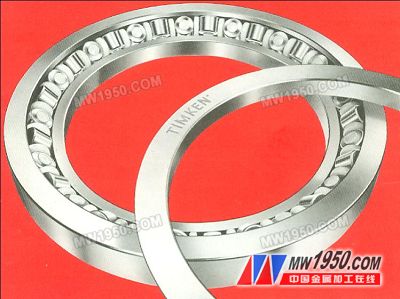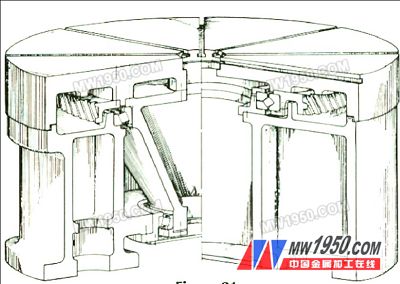The CNC rotary table can be used to achieve a circular feed motion. In addition to the circular feed motion, the CNC rotary table (referred to as the CNC rotary table) can also complete the indexing movement. The function of the indexing table is only to change the surface of the workpiece, and it can be used together with the automatic tool changing device to realize the multiple installations of several surfaces in one installation of the workpiece, thus greatly improving the working efficiency. The shape of the CNC turntable and the indexing table are not much different, but there are a series of features in the structure. Since the CNC rotary table can realize the feed motion, it has much in common with the feed drive mechanism of the CNC machine. The difference is that the drive mechanism realizes the linear feed motion, and the CNC rotary table realizes the circular feed motion. The rotary table is widely used in various CNC milling machines, boring machines, various vertical cranes, and vertical milling machines. In addition to requiring the rotary table to withstand the weight of the workpiece well, it is also necessary to ensure its rotation accuracy under load. The rotary table bearing, as the core component of the turntable, not only has a high load carrying capacity during the operation of the turntable, but also needs to have high rotation precision, high anti-overturning capability, and high rotational speed capability. In the design of the rotary table, the types of bearings used are roughly divided into several types: Thrust ball bearing + cylindrical roller bearing Thrust ball bearings can withstand certain axial forces, so the bearings are mainly used to bear the weight of the workpiece; cylindrical roller bearings are mainly used for radial positioning and external radial forces (such as cutting force, milling force, etc.) . This type of design is widely used and relatively inexpensive. Since the thrust ball is a point contact bearing, its axial bearing capacity is relatively limited, and it is mainly used in small or medium-sized machine tool rotary table. In addition, the lubrication of the thrust ball is also difficult. Hydrostatic bearing + precision cylindrical roller bearing The hydrostatic bearing is a sliding bearing that supplies pressure oil externally and establishes a static pressure bearing oil film in the bearing to achieve liquid lubrication. Hydrostatic bearing always works under liquid lubrication from start to stop, so there is no wear, long service life and low starting power. In addition, this bearing also has the advantages of high rotation precision, large oil film stiffness, and can suppress oil film oscillation. Precision cylindrical roller bearings have good radial bearing capacity, and thanks to the use of precision-grade bearings, the rotary table's rotation accuracy is also well guaranteed. Rotary tables designed with this type can withstand high axial forces, some of which weigh more than 200 tons and have a turntable diameter of more than 10 meters. However, this type of design also has some shortcomings. Since the hydrostatic bearing must be supplied with a special oil supply system to supply the pressure oil, the maintenance is complicated and the cost is relatively high. Crossed roller bearing Cross roller bearings (see Figure 7) are also commonly used on turntables. Crossed roller bearings are characterized by two raceways in the bearing and two rows of rollers arranged in a row. Compared to conventional thrust bearing + radial centering bearing combinations (see Figure 8), the cross roller bearing is compact, compact and simplifies the table design, reducing the cost of the turret. Jilin Yidao Technology Co., Ltd , http://www.opticsqm.com
Figure 7. Crossed roller bearing 
Figure 8. Comparison of turntable design between crossed roller bearings and conventional bearings Previous page 1 2 3 4 5 Next page